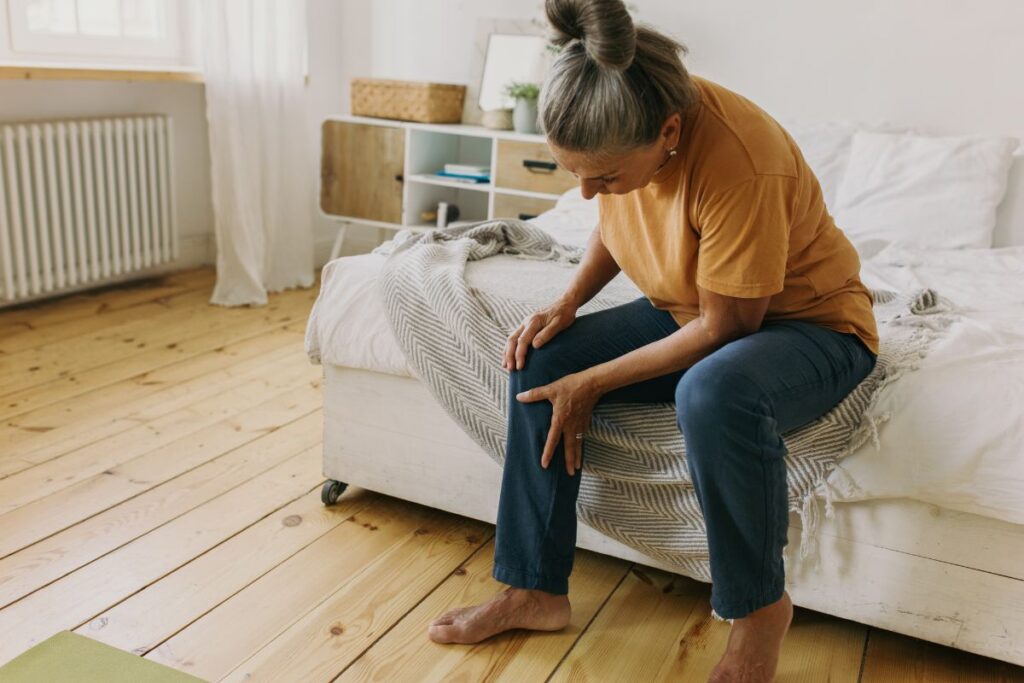Finally, you fall asleep after staring at the ceiling for what seems like forever. A few hours in, you’re awoken by the craziest sensation in your legs. It’s like they want to move on their own. Some nights, the feeling might last for a few seconds; others, it goes on much longer. Does this sound familiar? It may be a sign of restless leg syndrome (RLS), a neurological disorder more common in women than men. The cause of RLS is unknown, but it’s thought the impaired transmission of dopamine signals in the brain plays a role. “Food as medicine” is one approach to managing RLS, when you eat foods rich in specific nutrients and avoid trigger foods.
RLS symptoms
If you experience pins and needles, achy legs, itching, crawling, prickling, creeping, tingling, or other painful leg symptoms, you may have RLS or Willis-Ekbom disease. These uncomfortable sensations happen primarily at night, which is troublesome for menopausal women struggling with sleep.
Women are at higher risk of RLS than men, with some studies pointing to a rate twice that of men.
Symptoms can be so severe that they often cause quality of life issues, so finding a way to manage symptoms is critical to improving how you feel.
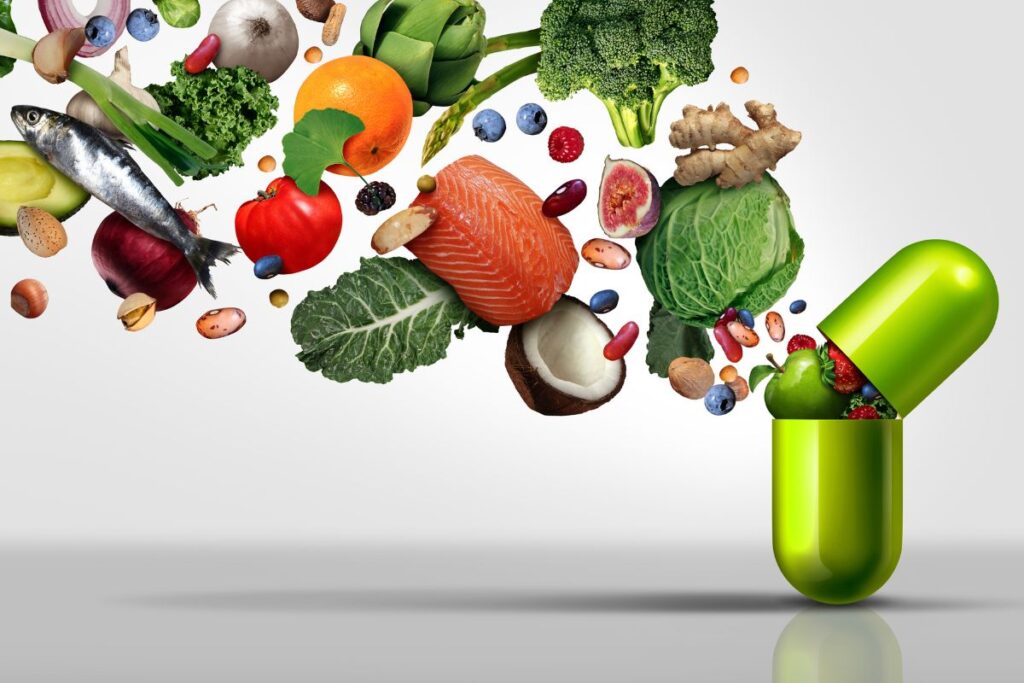
Which foods can help with RLS?
While some medications help with RLS, it’s not your only option. Non-pharmaceutical alternatives include mind-body therapies, home remedies, exercise, and food.
Food as medicine is a natural way to manage RLS symptoms and some underlying causes, like iron and magnesium deficiencies.
Focus on foods that have or boost:
- dopamine
- potassium
- vitamin D
- iron
- magnesium
Choosing healthy foods can also help you manage your menopause symptoms simultaneously, which may get worse if you’re experiencing RLS during the menopause journey.
Foods that may boost dopamine levels
Dopamine is a neurotransmitter, a chemical made in the brain that transmits messages between the brain’s nerve cells and between the brain and the body. In RLS, there appears to be an interruption in transmission and lower dopamine levels.
It’s important to get sufficient protein and avoid saturated fat to protect dopamine levels and keep them in balance.
The following foods help maintain tyrosine levels, which is an amino acid used to create dopamine:
- lean cuts of animal protein – chicken, beef, lamb, fish, pork
- avocados
- bananas and apples
- dairy, cheese in particular
- soybeans, broad beans
- nuts
- whole grains
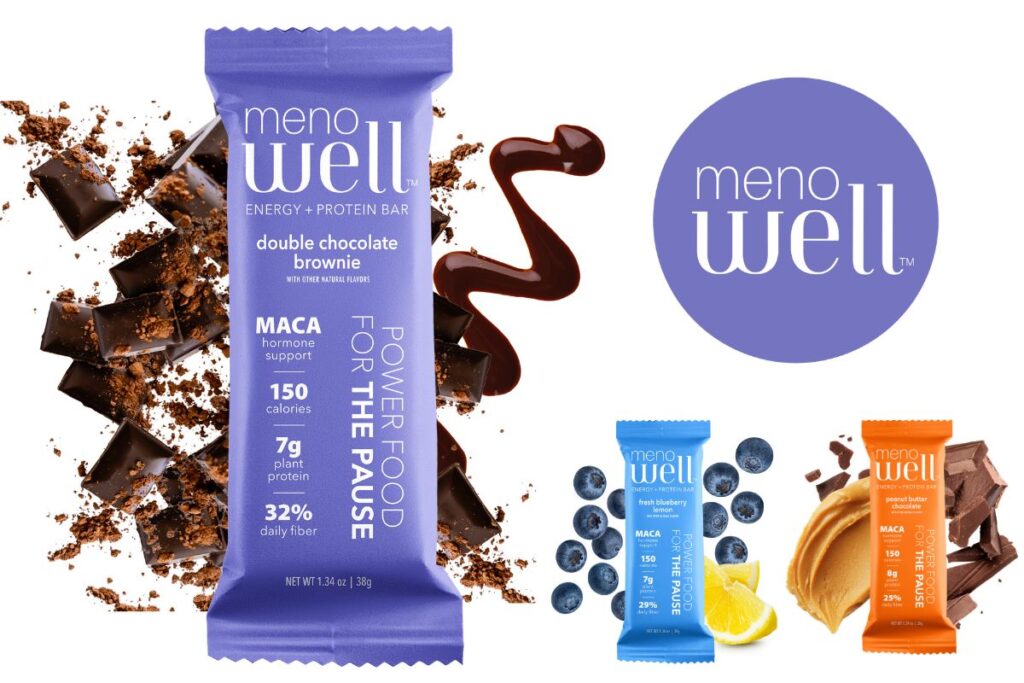
Boost Energy & Banish Cravings
Save 10% off MenoWell Menobars
Amp up your nutrition with these energy and protein bars! They provide many of the things important to eat during your menopause journey – protein, fiber, and gut-supporting prebiotics. The bars are vegan, gluten-free, dairy-free, low-carb, and low in added sugars.
Control your cravings and help manage your weight with these convenient bars that come in flavors like the best-selling Double Chocolate Brownie.
This is an affiliate link. We may earn a small commission if you access these services. The companies we work with are carefully vetted. However, we do not guarantee their products or services.
Potassium-rich foods
Potassium is thought to reduce leg cramping, a complaint for menopausal women, on its own or in combination with RLS.
In addition to bananas, other potassium-rich foods include apricots, lentils, squash, prunes, raisins, baked potato, orange juice, soybeans, and spinach.
Vitamin D
Vitamin D can also help with leg cramping, and it’s not uncommon for women to have a vitamin D deficiency.
Once again, dopamine is associated with vitamin D, so supplementation with vitamin or D-rich foods can help RLS symptoms.
Dopamine is associated with vitamin D, so supplementation with a vitamin or vitamin D rich foods can help RLS symptoms.
Vitamin D deficiencies can also be associated with RLS.
In a study of 201 patients, 78 had RLS. Of those patients, 75.6% had a vitamin D deficiency, and in the control group, it was 42.3% of patients.
Vitamin D-rich foods
So, how can you get more vitamin D?
Very few foods naturally contain vitamin D. The best sources are the flesh of fatty fish like trout, salmon, tuna, mackerel, and fish liver oils.
You can naturally find vitamin D in small amounts in beef liver, egg yolks, and cheese.
Mushrooms also have vitamin D.
Fortified foods provide the best food source for vitamin D. Milk, and ready-to-eat breakfast cereal are typically fortified. You may also see that on labels of yogurt and orange juice.
Increase water intake
While not technically food, water is a critical component of a healthy lifestyle.
How many glasses of water are you drinking a day?
It is a simple way to ensure hydration which helps reduce RLS symptoms.
Bonus! While you’re eating and staying hydrated, get out in the sunshine, a great source of vitamin D.
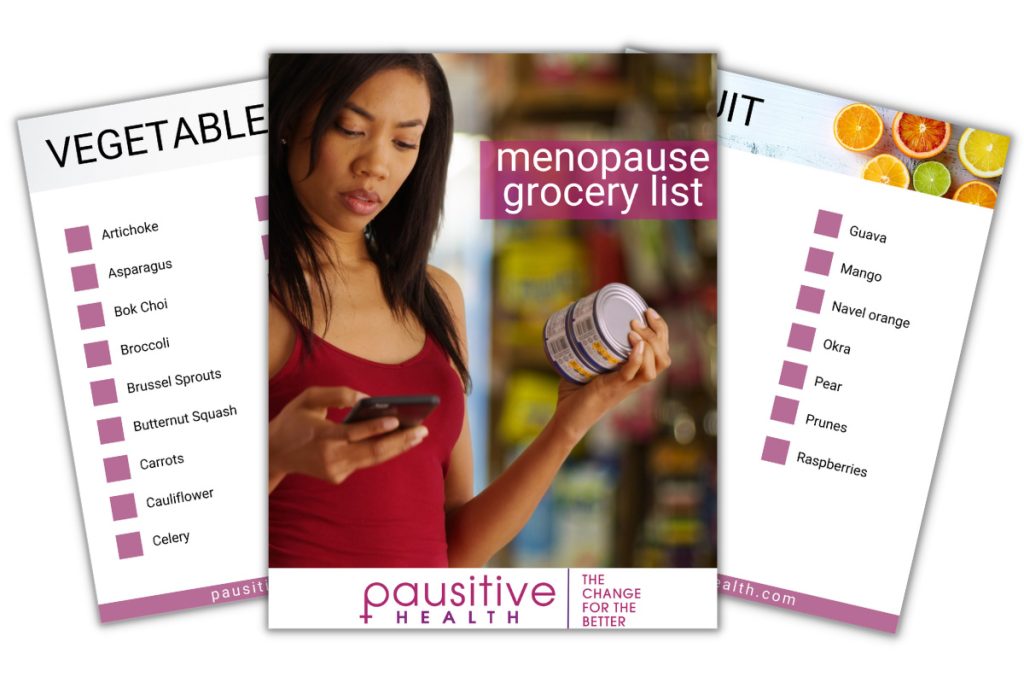
Make A Change For The Better!
This menopause grocery list contains a combination of foods specifically selected to help you feel better today and even better in the future.
"*" indicates required fields
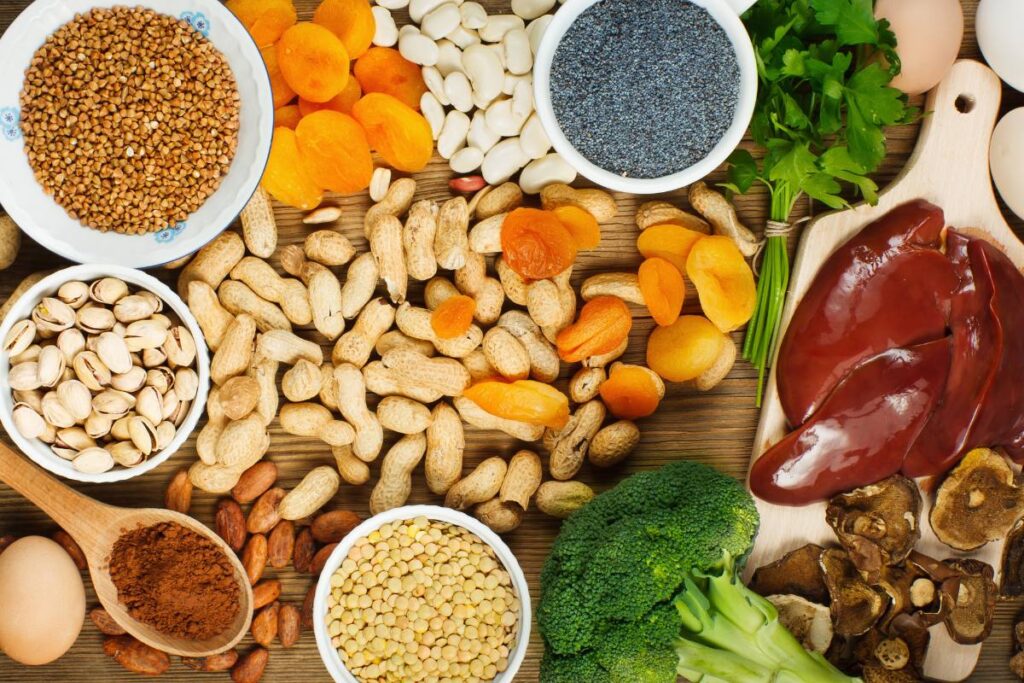
Iron deficiency and RLS
Women with heavy bleeding with their periods, which may worsen during perimenopause, may have low iron levels and become anemic (contributing to fatigue).
Iron is a major component of hemoglobin, a protein in red blood cells that transfers oxygen from the lungs to the tissues. It also helps the transmission of dopamine, and it’s thought that when it is interrupted, it can lead to RLS.
Several tests can identify a potential iron deficiency, two of which are serum iron and ferritin. Iron deficiency often leads to anemia, and blood tests commonly used in that situation include a complete blood count (CBC), which includes red blood cells, a total iron binding capacity (TIBC), and transferrin.
Talk with your healthcare practitioner about the possibility of an iron deficiency if you have RLS.
How much iron do you need?
The recommended daily allowance for women aged 19-50 years old is 18 mg. Note that it’s significantly higher than for a male. At age 51, it drops to 8 mg daily, the same as for men.
Iron-rich foods
Iron is naturally found in food, and it’s also added to food.
Foods high in iron include lean meat, seafood, nuts, beans, vegetables, and fortified grain products.
Breakfast cereals fortified with 100% of the daily value of iron have the highest concentration of iron at 18 mg. Start your day with this fortified cereal, and you’ll be set for the day.
Iron-rich foods, in descending order of iron concentration, include:
- Apricots
- Breakfast cereals
- Oysters
- White beans
- Beef liver
- Lentils
- Spinach
- Tofu
- Dark chocolate
- Kidney beans
- Sardines
- Chickpeas
- Tomatoes
- Beef, braised
- Potato, baked
- Cashew nuts
- Green peas
- Chicken
- Rice, white, long grain
- Bread, whole wheat, and white
- Raisins
- Spaghetti
- Tuna
- Turkey, roasted
- Pistachio nuts
- Broccoli
- Egg, hard-boiled
- Rice, brown
- Cheese, cheddar
- Cantaloupe
- Mushrooms, white
- Cottage cheese
- Milk
Iron supplements and medication
If you don’t get enough iron from food, talk to your healthcare professional about adding supplements to decrease your RLS symptoms.
Iron can interact with certain medications; conversely, some medicines can adversely affect iron levels. These include Levodopa, Levothyroxine, and proton pump inhibitors.
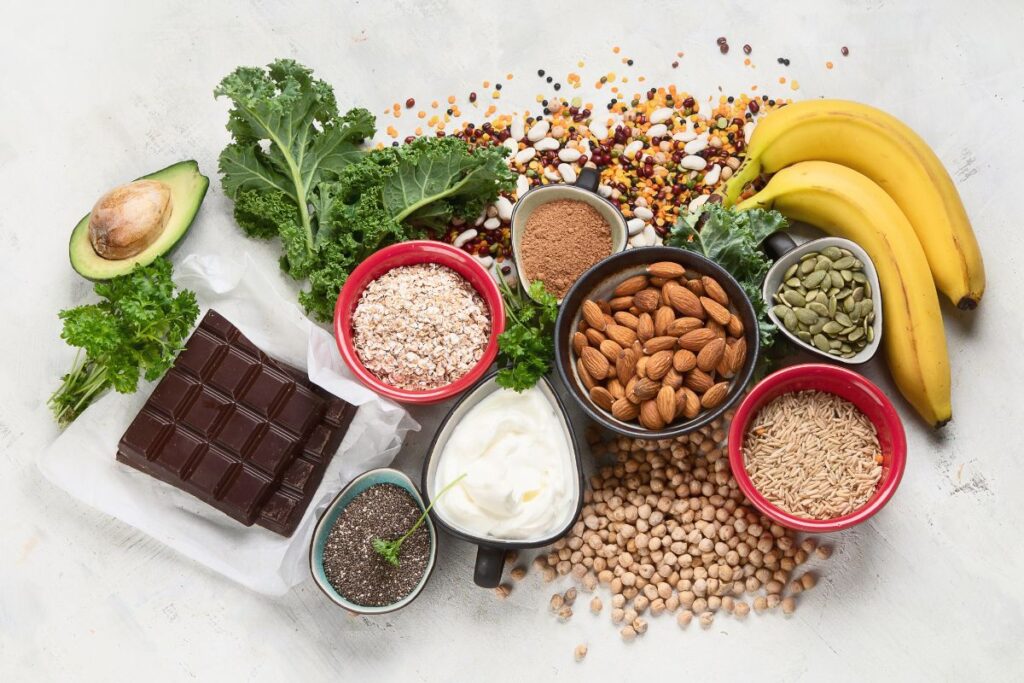
Magnesium and restless legs
A magnesium deficiency can cause generalized menopause-related leg pain.
Magnesium is a mineral that’s found abundantly in the body, mostly in your bones and soft tissues. It helps with several body functions, including muscle and nerve function, blood pressure regulation, and blood glucose control.
It helps your body produce energy, contributes to the structural development of bone, and helps transport calcium and potassium ions across cell membranes which help with nerve impulse conduction, muscle contraction, and normal heart rhythm.
The National Institutes of Health says laboratory tests and clinical assessment may be required to adequately measure magnesium levels.
How much magnesium do women need?
Women should have 320 mg of magnesium daily from age 31 to 51+ if they’re not pregnant or lactating.
Do bananas help with restless leg syndrome?
It’s true – bananas help with restless leg syndrome. They’re rich in magnesium and potassium, which also helps with symptoms.
Bananas have 28 mg of magnesium and 326 mg of potassium.
Foods high in magnesium
A magnesium deficiency can also cause leg cramps. Magnesium can also help relieve RLS symptoms.
You can get magnesium in green leafy vegetables, drinks, whole grains, nuts, seeds, legumes, breakfast cereals and other fortified foods, and fiber-rich foods.
It’s found in water (tap, mineral, and bottled), but the amount varies.
Seeds are a great source of magnesium, with pumpkin and chia seeds being some of the best, with 156 mg and 111, respectively, in 1 ounce.
Also, dark chocolate is relatively high, with 132 mg of magnesium. Of course, you have to eat dark chocolate in moderation due to its high-calorie count and fat and sugar content.
Magnesium-rich foods, in descending order, include:
- Pumpkin
- Dark chocolate
- Chia seeds
- Almonds
- Spinach, boiled
- Cashews
- Peanuts
- Cereal, shredded wheat
- Soymilk
- Black bean
- Edamame
- Peanut butter
- Potato
- Rice
- Yogurt
- Breakfast cereals, fortified with 10% of the DV for magnesium
- Oatmeal
- Kidney beans
- Banana
- Salmon, Atlantic, farmed
- Milk
- Halibut
- Raisins
- Bread
- Avocado
- Chicken breast
- Ground beef, lean
- Broccoli
- Rice
- Apple
- Carrot
If you’re curious about the magnesium levels in food, you can search the U.S. Department of Agriculture’s (USDA’s) Food Data Central database for each food.
Consuming too much magnesium doesn’t pose a health risk as your body excretes it in urine. However, you may develop diarrhea, nausea, and abdominal cramping.
Magnesium and medicine
If you’re on medicine for other health conditions, know that some meds can interact with magnesium supplements.
These include bisphosphonates, antibiotics, diuretics, and proton pump inhibitors.
Foods and fluids that can trigger RLS symptoms
In addition to focusing on the foods and fluids that can reduce symptoms of RLS, it’s as critical to pay attention to the foods that can trigger RLS symptoms and avoid them.
Alcohol and restless legs
Alcohol can increase symptoms for a host of medical conditions and health concerns for women, including RLS. It can also worsen hot flashes and make it harder to sleep through the night.
Since alcohol dehydrates you, it can also worsen RLS symptoms.
And with sleep already a struggle for some menopausal women, you want to take action to improve what you can and increase the likelihood you will be able to manage without medication.
Discontinue caffeine
Caffeine is another potential RLS symptom trigger.
So, limit your caffeine intake using this guide from the Center for Science in the Public Interest.
Avoid fatty foods and sugar
A study found a link between obesity and RLS, so watch fatty foods, sugar, processed foods, and other unhealthy food choices.
You may crave these foods if you lack sleep, so plan and prep for meals in advance, if possible reduce the temptation of fast foods. And have healthy options on hand so you can grab those after a sleepless night.
Managing RLS symptoms
Lifestyle choices like healthy eating are always a great starting point when you’re trying to improve RLS or menopause symptoms, but it’s just one tool in your toolbox.
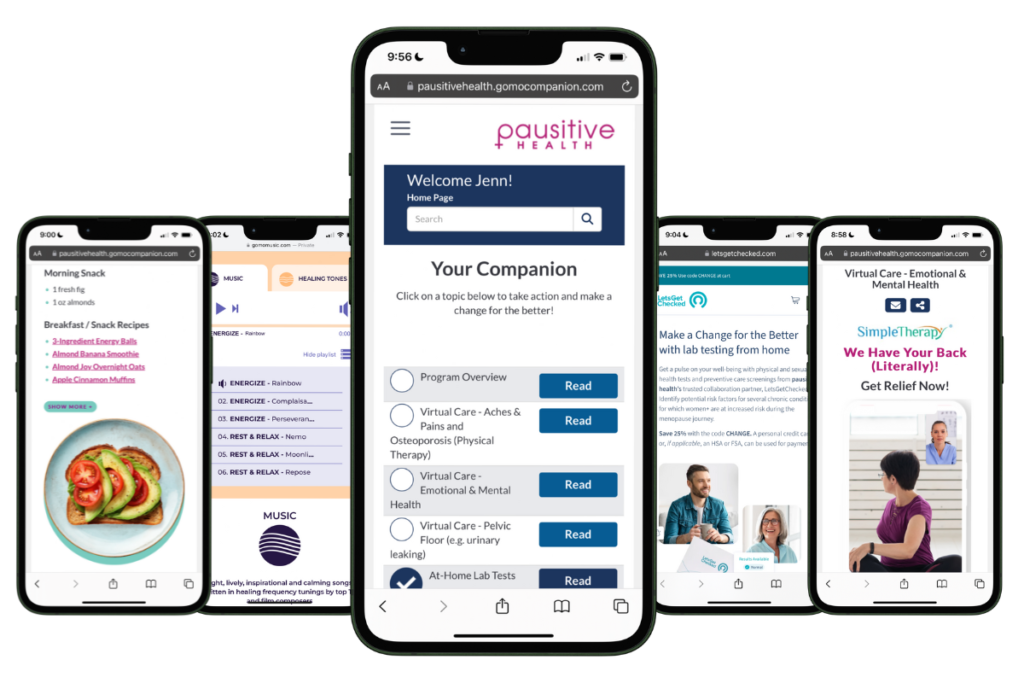
Free Support
For Your Menopause Journey!
Only available for a limited time!
Access a one-stop menopause journey digital destination that provides personalized text messages that focus on educational topics you select and offers many other features such as a diet assessment with recommendations, solutions from collaboration partners to address menopausal aches and pains (the musculoskeletal syndrome of menopause – MSM), pelvic floor issues, virtual care, lifestyle tools, and a supportive community.
Potassium | National Institutes of Health
Wali S, Alsafadi S, Abaalkhail B, Ramadan I, Abulhamail B, Kousa M, Alshamrani R, Faruqui H, Faruqui A, Alama M, and Hamed M. The Association Between Vitamin D Level and Restless Legs Syndrome: A Population-Based Case-Control Study. J Clin Sleep Med. 2018 Apr 15;14(4):557-564. doi: 10.5664/jcsm.7044. PMID: 29609719; PMCID: PMC5886433.
Vitamin D | National Institutes of Health
Iron Fact Sheet for Health Professionals | National Institutes of Health
Magnesium Fact Sheet for Health Professionals | National Institutes of Health
FoodData Central | U.S. Department of Agriculture
Caffeine Chart | Center for Science in the Public Interest
Seeman MV. Why Are Women Prone to Restless Legs Syndrome? Int J Environ Res Public Health. 2020 Jan 6;17(1):368. doi: 10.3390/ijerph17010368. PMID: 31935805; PMCID: PMC6981604.
Gao X, Schwarzschild MA, Wang H, and Ascherio A. Obesity and restless legs syndrome in men and women. Neurology. 2009 Apr 7;72(14):1255-61. doi: 10.1212/01.wnl.0000345673.35676.1c. PMID: 19349606; PMCID: PMC2677487.
You may also like…
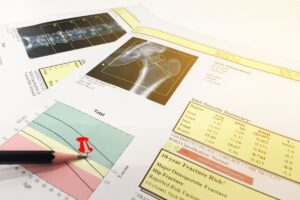
Osteoporosis 101: Know What To Look For and Foods That Can Help Prevent It
Osteoporosis is often undiagnosed and untreated in post-menopausal women+. It’s not curable, so prevent it with these foods and other lifestyle changes.

How Menopause Impacts Heart Health: 7 Action Steps That Help
Heart health lifestyle habits can help you manage menopause symptoms and help reduce the risk of cardiovascular disease.

Why Women+ Are Prone To Restless Leg Syndrome (RLS) And How To Treat It
Do your legs move uncontrollably at night? Learn why Restless Leg Syndrome (RLS), is more common in women and how to treat it.

